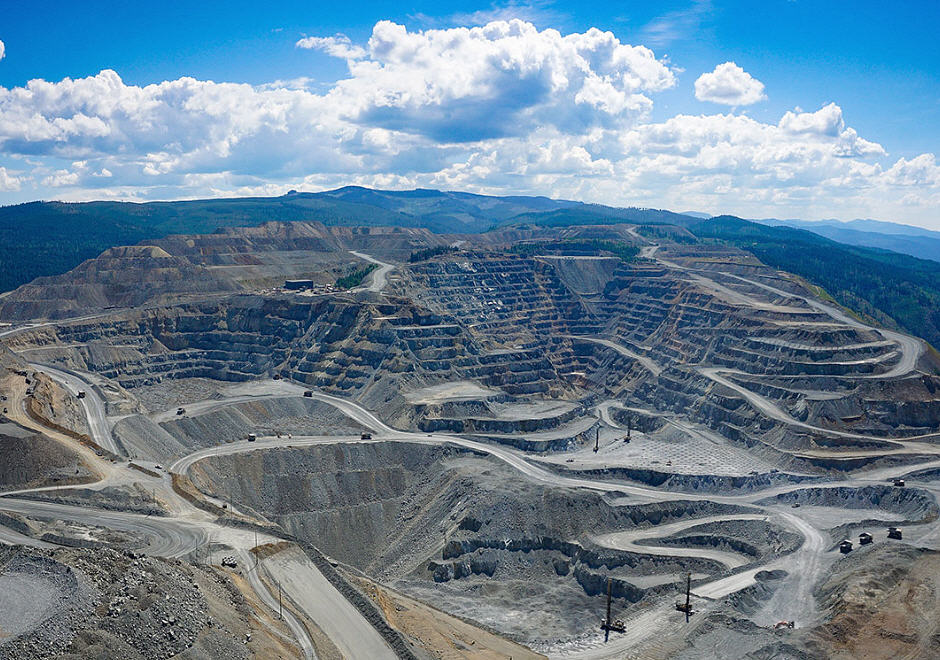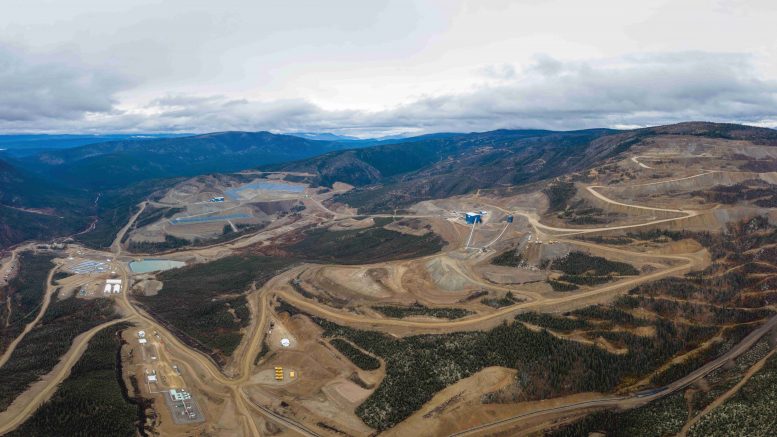Mining
Thursday, July 14th, 2022 3:48 pm EDT

They are zeroing in on two mines in particular – one already in operation, Copper Mountain in southern B.C., and one proposed, the KSM mine in northwestern B.C.
“One major threat to U.S. waters is the Copper Mountain copper mine, located just 25 miles from the Washington border on the Similkameen River, which feeds into the Columbia River watershed,” the groups say in a press release.
“Mine operators have proposed a plan to increase the height of one of its tailings dams to 853 feet — 250 feet higher than Seattle’s Space Needle. This would make the Copper Mountain Mine tailings dam the second tallest in the world.”
As for the KSM mine proposal, the large gold-copper mine would be located close to the Alaskan border, so there are concerns about the impact of a tailings pond failure on American rivers and fish.
“British Columbia’s industrial gold rush at the headwaters of rivers that flow into Alaska is a ticking time bomb and we are sitting ducks” said Breanna Walker, director of Juno-based Salmon Beyond Borders.
“That’s why communities around Southeast Alaska are asking President Biden to urge a ban on these mine waste dams along the headwaters of our wild salmon strongholds.”
B.C. has become an easy target for environmentalists concerned about mining. For one thing, B.C. has been experiencing a boom in both exploration and mine development, notably in northwestern B.C. – known as the Golden Triangle.
B.C. was also the location of one of the most significant mine tailings pond failures in recent history. In 2014, a tailings pond for the Mount Polley mine collapsed, flooding local waters with water and mine slurry.
That disaster prompted a special expert panel review and a number of regulatory changes aimed at improving tailings pond design, management and safety. That included regulations requiring mines to establish Independent tailings review boards, have an engineer of record responsible for tailings facilities design, conduct and report on annual dam safety inspections, and conduct regular dam safety reviews.
The Mount Polley disaster also prompted the BC Mining Law Reform and Skeena Wild Conservation Trust to create a new database of tailings ponds in B.C.
The recent report, by Steven Emerman of Malach Consulting, uses the database to examine sites that might pose the greatest risks, should they experience a tailings pond failure.
“The 86 sites containing at least one tailings storage facility in British Columbia include 57 sites that are closed or under care and maintenance, 18 operating sites, and 11 proposed sites,” the report notes.
“Out of 86 sites containing tailings storage facilities, 54 are located directly within salmon habitat.”
Emerman’s report examines three main risks that might contribute to dam failure: dam height, high seismicity and designs that use upstream dam construction.
Upstream dam construction does not refer to its location to rivers. Rather it is an approach in which a starter dam is first built, and then gradually raised, upstream of the starter dam, using tailings.
These upstream designs can be be less stable than other designs, according to the engineering firm Klohn Crippen Berger. Mine operators have therefore been moving away from upstream dam construction to centerline design or, in some case, modified centerline.
The KSM tailings facility would use centerline design, with four dams and three cells, with the middle cell isolating any mine waste with acid generation potential, and multiple drainage ditches and tunnels around the facility to divert water from the dam. It’s the sheer height of the KSM tailings pond dams that makes it a concern, according to Emerman’s report.
The environmental groups in their news release say the KSM dams would ultimately be built as high as 784 feet.
“The tailings facility could hold up to 2.6 billion metric tons of wet tailings, the equivalent of 460,000 Olympic-size swimming pools,” the press release says.
Emerman’s report uses three rankings for risk — high, very high, and extreme — corresponding to potential loss of life.
“It should be noted that, although the tailings dam failure at the Mount Polley mine was one of the greatest environmental disasters in Canadian history, its failure consequence category was only in the Significant category because there was negligible potential for loss of human life,” the report notes.
The report identifies five mines or proposed mines that it considers to have extreme risk ratings: Copper Mountain, Gibraltar, Highland Valley Copper, New Afton and KSM. It also identifies one closed mine operation, Brenda, in the extreme risk category.
“The sites in this failure consequence category include two operating sites with upstream dams (Copper Mountain and Gibraltar –TSF),” the report notes.
“In both cases, the tailings storage facility with the upstream dam is the same as the tailings storage facility with the Extreme consequence rating, which is a disturbing combination of unacceptable probability of failure and unacceptable consequences of failure.”
Following the Mount Polley tailings pond failure, the B.C. government required all proposed mines to review their tailing facilities designs.
Seabridge Gold (TSX:SEA) formed an Independent Geotechnical Review Board comprised of experts in tailings management, and submitted the KSM tailings pond proposal to a Best Available Tailings Technology (BATT).
“This study confirmed that the existing tailing management facility design is the best available technology for tailings deposition and the most environmentally responsible plan to minimize long term risks associated with the proposed tailing storage facility for the KSM Project,” Seabridge says in an email to BIV News.
If built, the dam would be subject to ongoing reviews, Seabridge says.
“KSM’s TMF will be regulated and monitored in compliance with the Canadian Dam Safety Association (CDA), International Commission on Large Dams (ICOLD), International Council on Mining and Metals (ICMM), Mining Association of Canada (MAC), and Engineers and Geoscientists BC (EGBC), along with regular reviews by an eight-member Independent Geotechnical Review Board.”
As for Copper Mountain, the company’s chief operating officer, said the company is “confident in the robustness of our tailings design and operation.”
“The Copper Mountain Tailings Management Facility (TMF) is designed and managed to the high standards established for B.C. tailings management facilities, and to the high professional and ethical standards required of BC Qualified Professionals,” he writes in an email.
“We are transparent with our TMF designs and performance reports, which are available on our web site, and which we also review with our Community of Influence. We encourage the use of facts and science.”
The Mining Association of BC (MABC) takes issue with Emerman’s report.
“Unfortunately, this report appears to either ignore the facts or mislead British Columbians about key aspects of our province’s mining laws and regulation,” said MABC president Michael Goehring. “The report fails to consider how BC tailings facilities use design and engineering requirements and best available technology to mitigate risk.
“Importantly, tailings storage facilities are already designed to withstand extreme weather and seismic events, and any suggestion otherwise is wrong or deliberate fear-mongering. In 2021, the independent BC Chief Auditor of Mines released an audit that determined BC’s regulations for mine tailings are among the best in the world.”
(This article first appeared in Business in Vancouver)
This post has been syndicated from a third-party source. View the original article here.




